
If you’re looking for information about visiting Pittsburgh’s Soldiers & Sailors Memorial Hall and Museum, you’re in the right place!
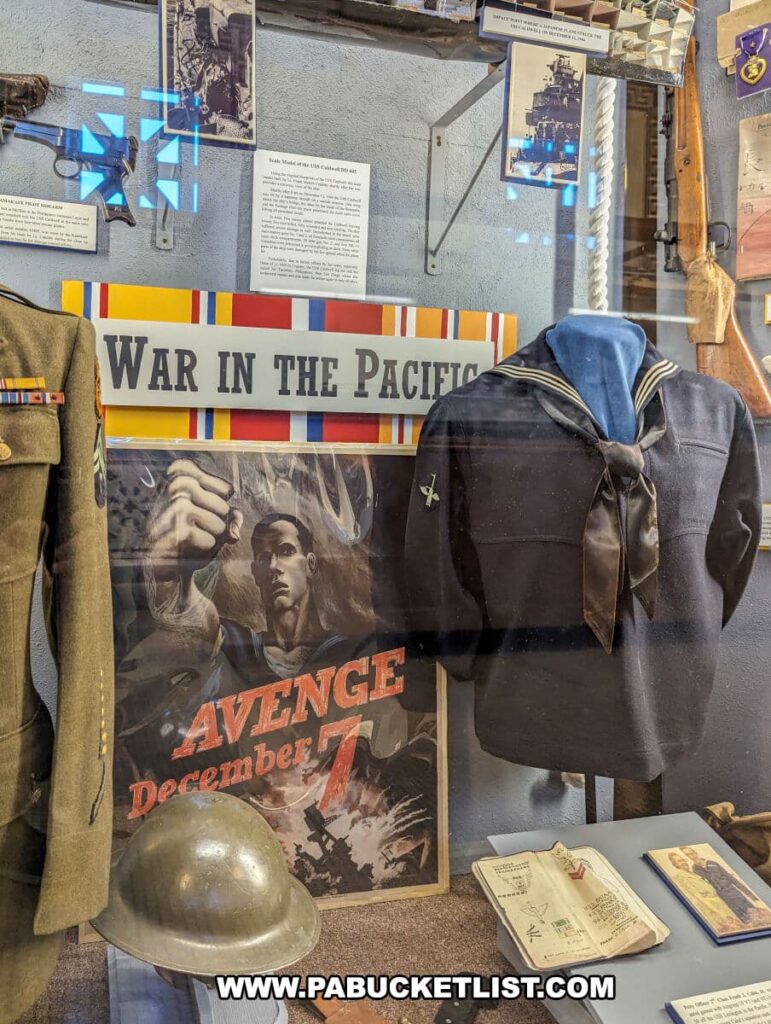
This landmark Pittsburgh museum is renowned as the largest memorial in the United States devoted exclusively to celebrating the valor of all branches of military veterans and service personnel.

For enthusiasts of military history, the museum’s collection of extraordinary artifacts and memorabilia provides an insight into the experiences of American service personnel throughout all of America’s conflicts, from the Civil War to modern times.

Directions | Hours | Admission Fees
Soldiers & Sailors Memorial Hall and Museum is located at 4141 Fifth Avenue, Pittsburgh, PA 15213.
The museum is open Monday – Saturday, from 10:00 AM – 4:00 PM (closed major holidays).

Admission fees are: Adults $15, Seniors (55+) $10, Children (5-17) $5, College Students with valid student ID $5, Military and Veterans Free.

Birth of the Memorial
The Memorial Hall, conceptualized by the Grand Army of the Republic in the 1890s, was born out of a desire to honor the rapidly diminishing ranks of American Civil War veterans.

Designed by architect Henry Hornbostel in 1907 and dedicated in 1910, the building, crafted in the Beaux-Arts style, is a heroic and grandiose testament to history.

It is strategically located in Pittsburgh’s Oakland neighborhood, adjacent to the University of Pittsburgh and the Cathedral of Learning.

The sheer scale and elegance of the building are a testament to the profound respect the builder’s wished to convey for America’s military legacy.
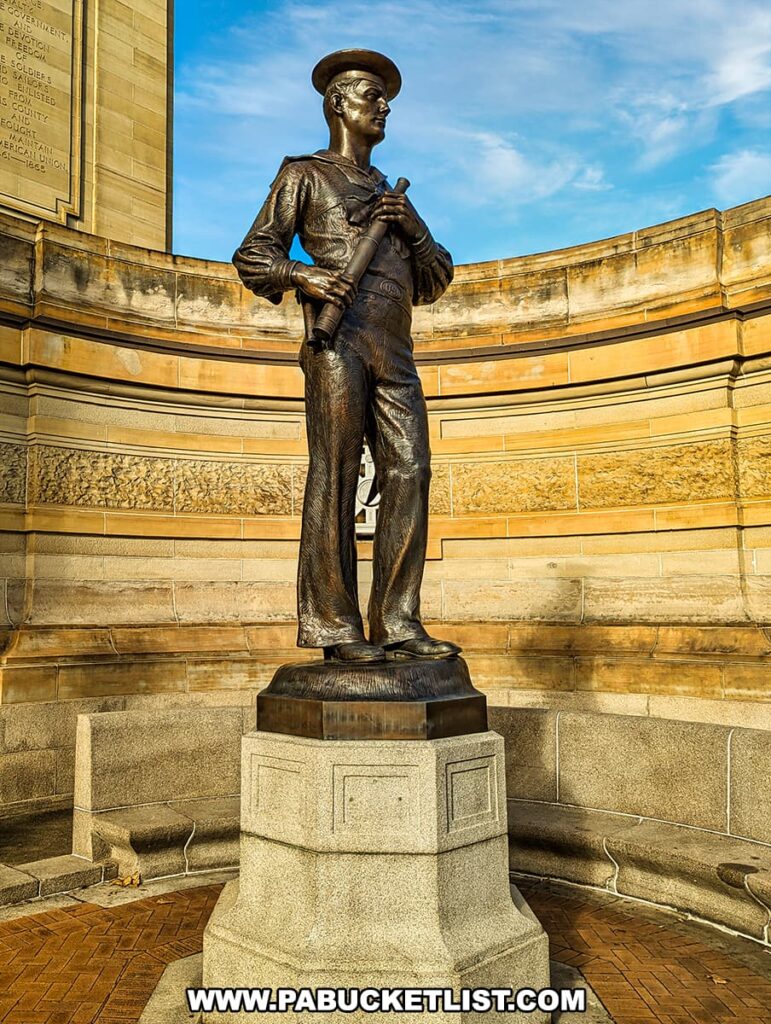
The Hall’s Interior | A Repository of History
The building hosts a 2,500-seat auditorium, a banquet hall, meeting rooms, and a museum.

The auditorium is particularly noteworthy, with a 78-ft.wide, hand-painted canvas of Lincoln’s Gettysburg Address proudly displayed on the front wall, said to be the largest version of the speech in the world.

Over a century, a vast collection of donated artifacts has allowed the Soldiers & Sailors Memorial Hall & Museum to offer a unique interpretation of American military history.

These artifacts, displayed against a backdrop of marble, oak, and bronze, narrate the personal stories of service personnel, providing insight into what they wore, carried, and brought home.

Exploring the Exhibit Halls
The Front Hall: Visitors are greeted by architectural splendor and military history, including a collection of significant military flags and Civil War-era musical instruments.

The Gettysburg Room: Once a Civil War veterans’ meeting room, this oak-paneled room now hosts exhibits including early photographs of the Hall and artifacts from the Battle of Gettysburg.

The West Hall: Featuring Civil War artifacts, this hall narrates the stories of families and local soldiers of the era, showcasing many rare national treasures.
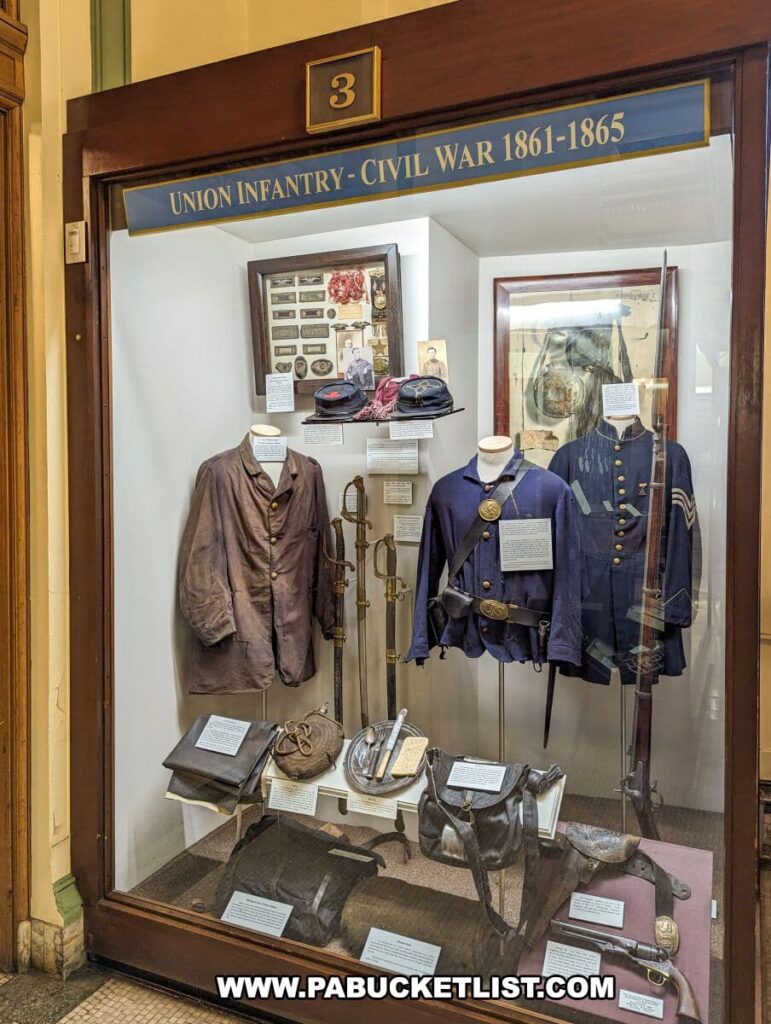
The North Hall: Transitioning into the 20th century, this hall features World War I and II exhibits, with rare uniforms and artifacts in fifteen display areas.

The East Hall: This area delves into the War in the Pacific, the roles of the Coast Guard and Merchant Marine, POW stories, and the Korean and Vietnam Wars, concluding with recent conflicts in the Gulf, Iraq, and Afghanistan.

Joseph A. Dugan, Jr. Hall of Valor: Established in 1963, this exhibit honors regional veterans who demonstrated extraordinary heroism.
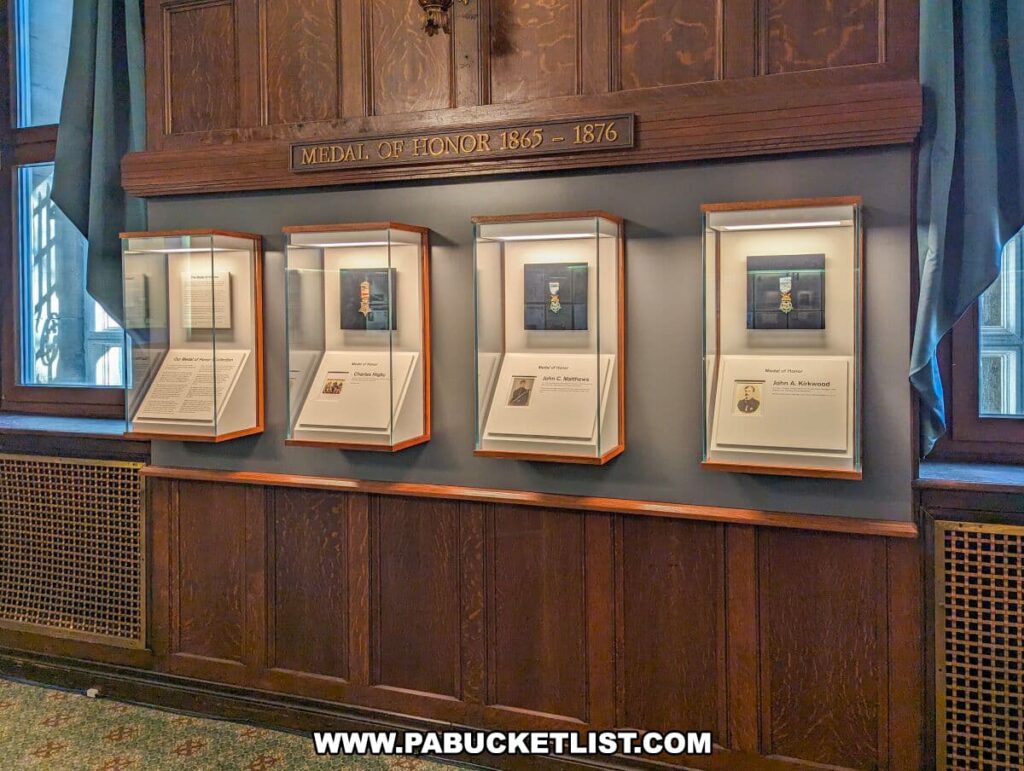
The Museum in Pop Culture
The 1991 movie “Silence of the Lambs” utilized Soldiers and Sailors Hall as a filming location for the “Memphis Courthouse” scenes, when serial killer Hannibal Lechter (played by actor Sir Anthony Hopkins) escapes custody.
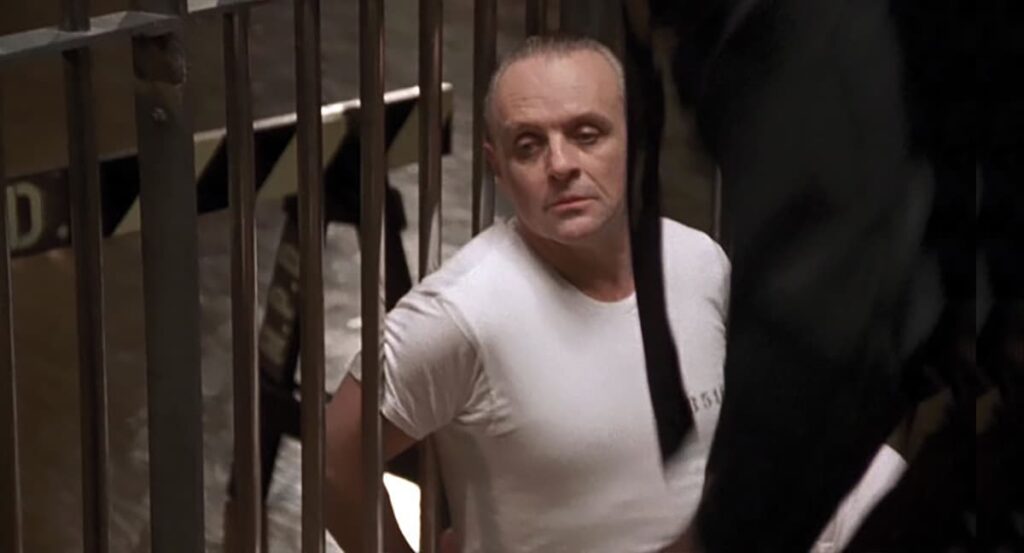
Fans of the film will recognize the third floor banquet room as the home of Doctor Lechter’s “cage”, when he is transferred from Baltimore to Memphis.

As an homage to the film, the museum hosts a “Cage Night” in October where a replica of Hannibal Lechter’s cage is erected in the banquet room, complete with a reenactor portraying Hopkin’s character.

Final Thoughts
The Soldiers & Sailors Memorial Hall is more than a mere museum; it is a living testament to to the spirit and bravery of those who have dedicated their lives to defending our nation.

Stepping through its doors is akin to entering a temple dedicated to valor, where the echoes of history resonate with profound respect and gratitude.

You’ll leave with a deeper understanding of American military history and a renewed appreciation for the sacrifices made by those who have served our country.

Nearby Attractions
The Carnegie Museums of Art and Natural History in Pittsburgh exhibit everything from ancient relics to timeless art, all under one roof.

The Heinz History Center in Pittsburgh is the largest history museum in Pennsylvania!

The Fort Pitt Museum is renowned for its in-depth portrayal of pivotal moments in Pittsburgh’s history, including a significant focus on the French and Indian War.
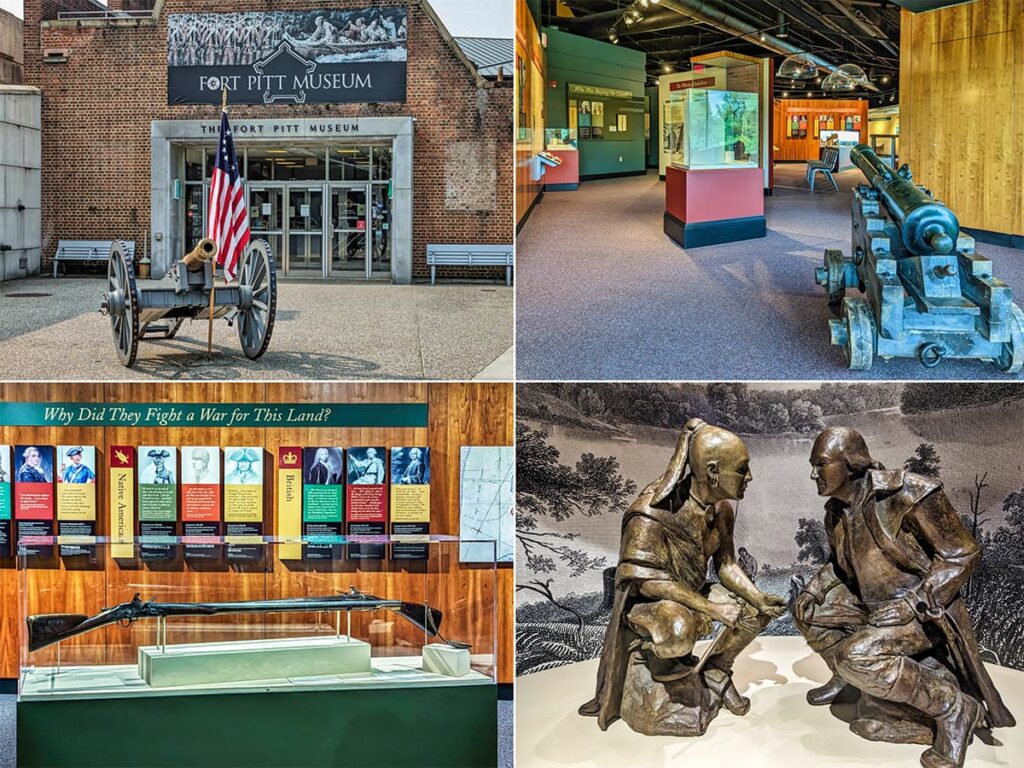
The Pittsburgh Zoo and PPG Aquarium is both the largest zoo and the largest aquarium in Pennsylvania.

The National Aviary in Pittsburgh is America’s largest independent, indoor zoo dedicated to birds.

Did you enjoy this article?
If so, be sure to like and follow PA Bucket List on Facebook, Instagram, and/or Pinterest to learn more about the best things to see and do in Pennsylvania!
Click on any of the icons below to get connected to PA Bucket List on social media.


